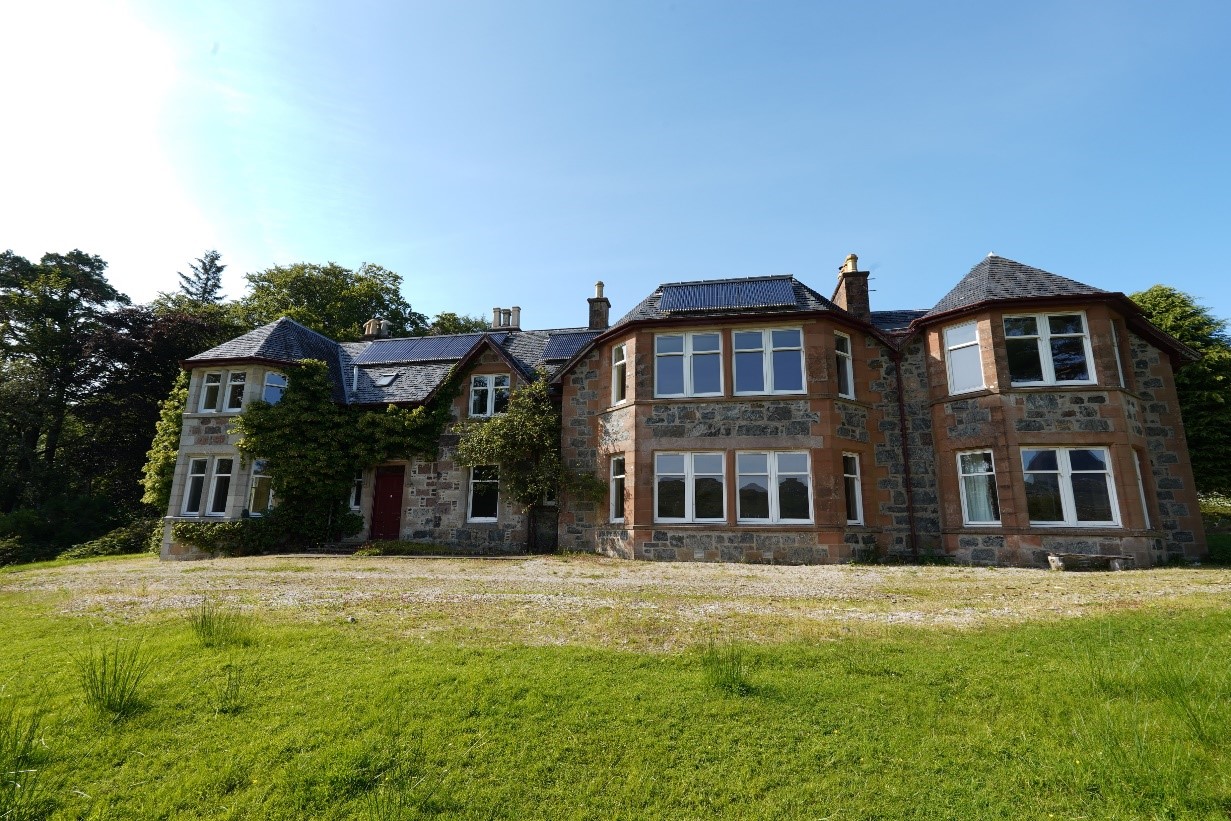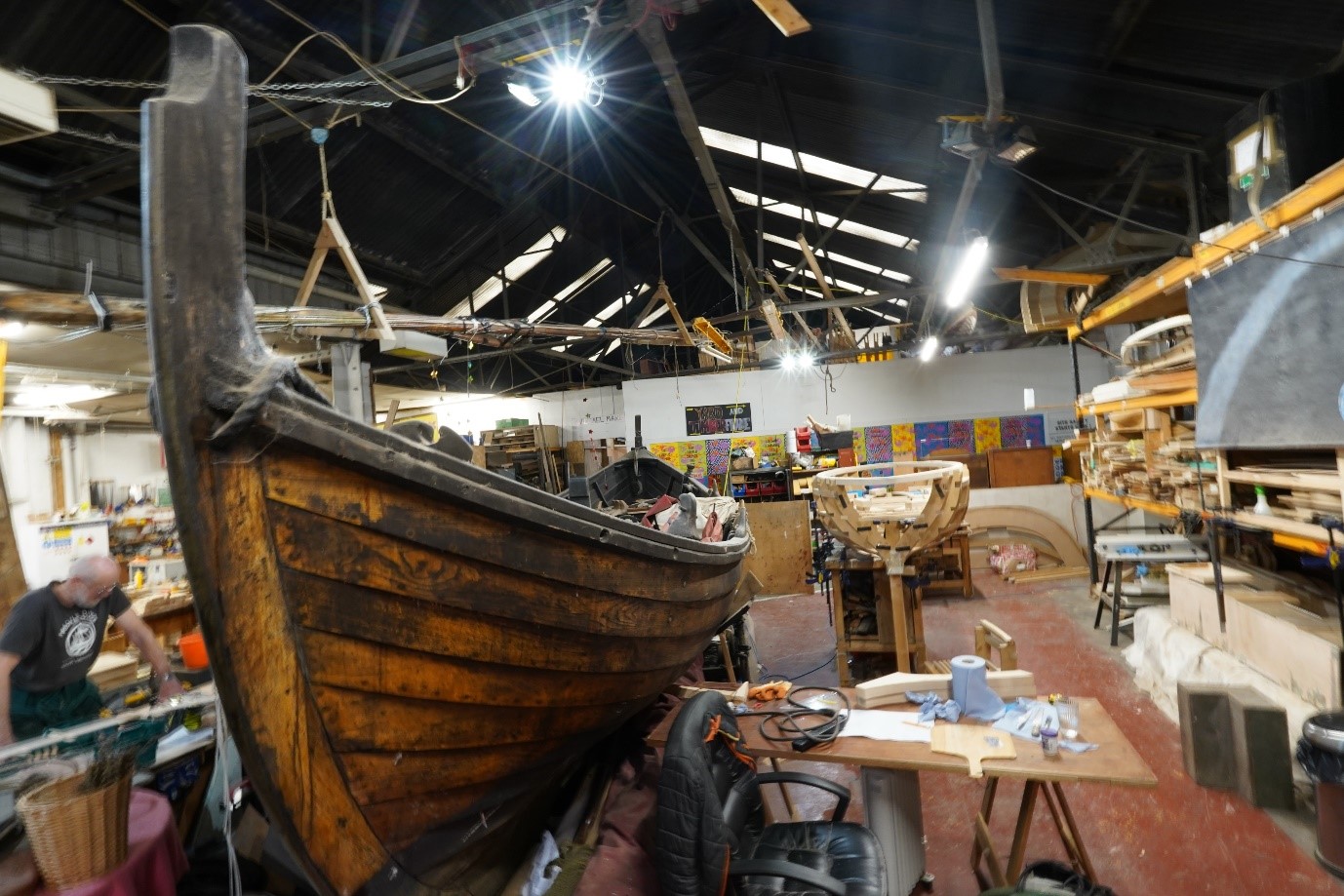Scoping Field Visits to Community Trusts and Community Led Organisations in Scotland
Atenchong Talleh Nkobou (PI) and Andrew Ainslie (Co-I) had the opportunity to visit some community-led organisations in Scotland from the 22 July – 3 August 2024. The visit was a scoping exercise aimed at identifying and building relationships with community trusts and activists who are engaged with various initiatives around community land rights and community led development in Scotland. There are lots of active community groups, activists and organisations at the meso-level (e.g. CLAN, CLS, etc) and a great many researchers from Scottish, English and Welsh universities investigating aspects of land reform in Scotland. So, it is very congested in that sense – with an accompanying sense of research fatigue expressed by some we met. But there is also a sense in which things are not moving (a) fast enough or (b) in the direction of greater community ownership and less concentration in the struggles against the depredations of national, UK and international capital.

Figure 1 The Glencanisp Lodge, a classic Victorian sporting lodge, has remained closed due to financial challenges within the Assynt Foundation, Lochinver, Scotland
We visited the Assynt Foundation, where we had interesting discussions about land reform and the history of community development in Assynt and Furth. Much of the land here is of low quality for agriculture (mainly a consequence of a history of deforestation). Whilst there were some cattle and sheep in evidence, most of the land is given over to grouse shooting and tourism. In fact, it feels like the pull of the tourist dollar, euro, etc is turning the Scottish countryside into a ‘playpark economy’ (the ‘Disneyfication’ of Scotland) where everything is geared towards tourists, somewhat to the detriment of local people. Although the picture in complicated, those that have (property, businesses, etc) in Scotland are making very good money (as described to us) especially over the high tourist season (the time of our visit), but those that don’t have anything, cannot afford to buy a house in an inflated housing market and are literally pushed out because rents are also very high. They can’t even form part of the ‘underclass’ (service industry) who might serve, bow and scrape to the monied tourists, because they cannot afford to rent and live locally enough on the wages paid for such work. This division plays out in local politics relating to planning, development priorities, etc.

Figure 2: Orcuan, Boat of the GalGael Trust: Symbol of Cultural Heritage in the Community Wood and Craft Space, GalGael Trust, Glasgow Scotland
‘…rebuilding one of these boats was a reclamation of our history and practices that necessitated the use of these boats … We use it as a kind of metaphor for the kind of journey of life that we all experience is quite well captured in a boat as something that's created by a community…’ Member of the GalGael Trust (25.07.2024)
In Glasgow, we visited the GalGael trust – a thriving community of sharing, care and nurture, where those on the margins of society find comfort and rest – [we are] ‘more about combating loneliness, deprivation and isolation through skills [development]’. We shared a community dinner, prepared in the spirit of togetherness, open all and with harvests from the GalGael Garden and Ibrox Commons. Their Making Just Futures initiative, for example, aims to empower communities to imagine, determine and ultimately make just futures that meet their needs for living well and sustainably in an increasingly uncertain world.

Figure 3 Protesters outside fenced Land at Taymouth Castle 29 July 2024
On the 29 July, we participated in a Land Worker’s Alliance rally on at Taymouth Castle in Kenmore to protest corporate land grabs and call for radical land reform in Scotland. Although focused in Kenmore, this visit exposed the wider, deep-seated tensions between community ideals and corporate land development in Scotland. All community assets including the public toilets(!) were under the purview of this corporate entity. The skewed concentration of land ownership is extreme and worsening here and elsewhere, and there is a concerted attempt, with the Community Land ownership legislation passed in recent years, to give communities ‘first right of purchase’ to any land that comes up for sale. Activists we spoke to indicated that although the law is a positive development, it is not backed up by sufficient funding.
“…We’re in the First Minister’s constituency right now, so if this can happen here, it does really show how little power the Scottish Government currently have over land, and making sure that land is working in the public interest…” ( Protester, at the rally organised by the LWA, Taymouth 29.07.2024).
From there, we visited the lovely Isle of Skye – and had discussions with Trustees/board members of Ionad Thròndarinis (the Trotternish Centre) who told us that ‘houses [on Skye] that are available are so expensive that people are just priced out of the housing market’. Housing for younger people is extremely expensive and one way in which modern-day clearances are taking place is through the virtual impossibility of building houses for local people, for social housing etc. as told to us on Skye. This is because planning is so convoluted and subject to objections by what those we met called ‘the landed gentry’.
The link between the precarity of language, culture and land for indigenous communities was exposed by the realities on Skye. In fact, Ionad Thròndarinis (the Trotternish Centre) focuses on promoting Gaelic culture and language courses, including efforts to build community housing.

Figure 4 Where the rivers meet; Comrie, Scotland
Finally, we visited Comrie, and the Cairngorm Estate, a failed land conservation initiative which has been described by a land activist as a ‘get-rich-quick-scheme’ by a ‘green laird’. Discussions revealed that the value of land has recently become further inflated by the emerging markets in carbon credits – the recent recognition in this regard of the enormous carbon sequestration value of peat bogs and the planting of trees (through government funding for afforestation), has led to an investment boom by vested interests (including Venture Capitalist firms and Private Equity, but also established forestry companies). This leads to destructive planting of trees on peatbog (releasing massive amounts of methane in the process), and the quick and dirty establishment of uniform plantations rather than stands/forests of indigenous tree species. This is the case with the Far Ralia estate in the Cairngorms National Park, owned by Abdrn PE firm, which was the beneficiary of (approx. £2.3m) Scottish government funding to promote a programme of carbon offsets. They have apparently made a real mess of it, environmentally speaking, and are now trying to sell the property. Andy Wightman, among others, have said it is an environmental catastrophe.
The overarching aim of the Reversing the Gaze project, is to bring these community land members, activists, researchers and community organisations working in different parts of Scotland, into conversation with each other, provide opportunities for learning, including co-identifying ways for achieving ‘development’ (recognising the entirely contested nature of that concept) that is both more sustainable and equitable through community-led initiatives.